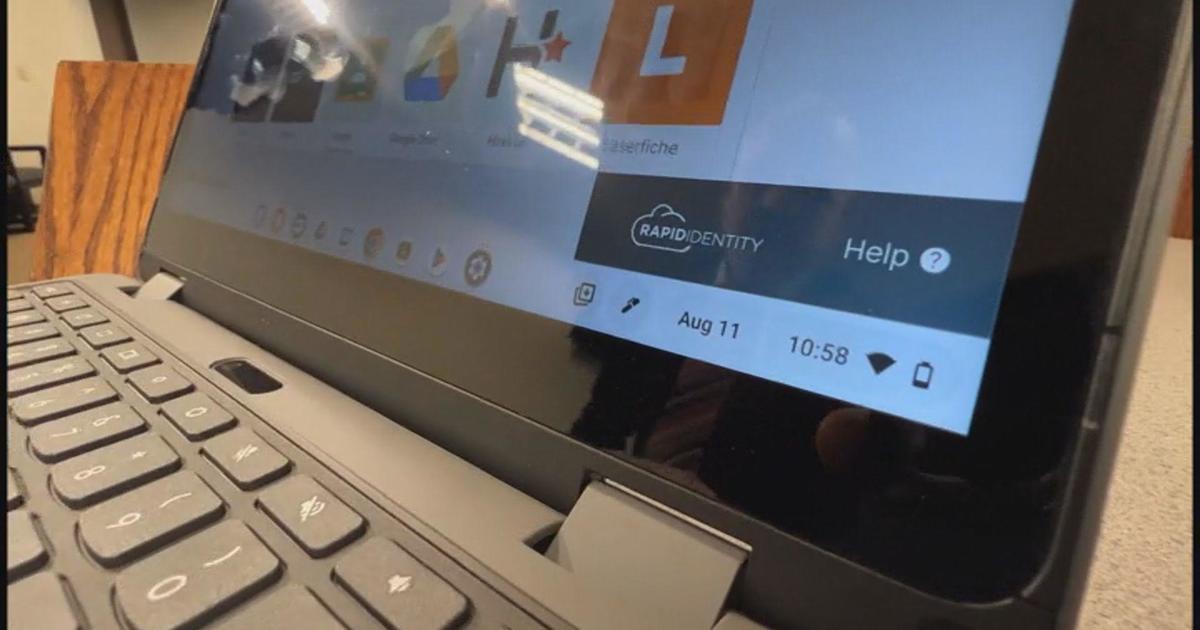Dallas ISD’s new plan to increase high-speed internet accessibility
Dallas ISD's new plan to increase high-speed internet accessibility CBS News


Dallas ISD’s New Plan to Increase High-Speed Internet Accessibility

Introduction
Dallas Independent School District (DISD) is implementing a new plan to improve high-speed internet accessibility for students. This initiative aligns with the Sustainable Development Goals (SDGs) of ensuring inclusive and equitable quality education for all (SDG 4) and promoting sustainable economic growth and decent work for all (SDG 8).
The Importance of High-Speed Internet Access
High-speed internet is an essential educational tool that many students still lack access to. Sean Brinkman, the Chief Technology Officer for DISD, emphasizes the significance of internet access for students’ learning and development. He acknowledges that instruction and learning extend beyond the school day, making it crucial for students to have internet access at home.
Current Challenges
Approximately 20% of DISD’s 140,000 students do not have access to high-speed internet. Efforts to address this issue have been ongoing, with the COVID-19 pandemic accelerating the need for immediate action. Despite the return to in-person learning, DISD continues to prioritize increasing internet access for all students.
A New Approach
In an effort to improve internet connectivity, DISD is shifting away from distributing laptops paired with hotspots. Instead, the district has invested in 15,000 laptops with eSIM cards, also known as digital SIM cards. These laptops can be paired with any service provider, allowing them to function without relying on a hotspot.
When a laptop with an eSIM card is on a DISD campus, it automatically connects to the district’s network. In the absence of WiFi, the eSIM card provides the laptop with mobile data, essentially turning it into a large cell phone.
Implementation and Impact
The laptops with eSIM cards are initially being distributed to students at Frederick Douglass Elementary School. Additionally, DISD has upgraded the school’s broadband infrastructure to support improved internet connectivity. This targeted approach ensures that resources are allocated where they are most needed, with plans to expand access throughout the entire district.
Conclusion
Dallas ISD’s new plan to increase high-speed internet accessibility aligns with the SDGs by promoting inclusive education and sustainable economic growth. By providing students with laptops equipped with eSIM cards, DISD aims to bridge the digital divide and ensure that all students have equal opportunities for learning and success.
SDGs, Targets, and Indicators Analysis
1. Which SDGs are addressed or connected to the issues highlighted in the article?
- SDG 4: Quality Education
- SDG 9: Industry, Innovation, and Infrastructure
- SDG 17: Partnerships for the Goals
The article discusses the issue of high-speed internet accessibility for students, which is directly related to SDG 4 (Quality Education). Access to high-speed internet is considered an essential educational tool, and the lack of access can hinder students’ learning opportunities.
Additionally, the article mentions the district’s investment in laptops with eSIM cards and the upgrade of broadband infrastructure, which aligns with SDG 9 (Industry, Innovation, and Infrastructure). These efforts aim to improve the technological infrastructure and connectivity within the education system.
Furthermore, the article highlights the collaboration between Dallas ISD and service providers to ensure internet access for students. This collaboration reflects SDG 17 (Partnerships for the Goals), which emphasizes the importance of partnerships and cooperation to achieve sustainable development.
2. What specific targets under those SDGs can be identified based on the article’s content?
- Target 4.c: By 2030, substantially increase the supply of qualified teachers.
- Target 9.c: Significantly increase access to information and communications technology and strive to provide universal and affordable access to the Internet in least developed countries by 2020.
- Target 17.6: Enhance North-South, South-South, and triangular regional and international cooperation on and access to science, technology, and innovation and enhance knowledge sharing on mutually agreed terms.
The article does not explicitly mention the specific targets under the SDGs. However, based on the content, we can infer the following targets:
Under SDG 4:
– Target 4.c: By 2030, substantially increase the supply of qualified teachers. Improving internet accessibility for students can enhance their access to online educational resources and digital learning platforms, which may require qualified teachers to facilitate and guide their learning.
Under SDG 9:
– Target 9.c: Significantly increase access to information and communications technology and strive to provide universal and affordable access to the Internet in least developed countries by 2020. The efforts of Dallas ISD to increase high-speed internet access for students align with this target, as they aim to provide universal access to the internet for educational purposes.
Under SDG 17:
– Target 17.6: Enhance North-South, South-South, and triangular regional and international cooperation on and access to science, technology, and innovation and enhance knowledge sharing on mutually agreed terms. The collaboration between Dallas ISD and service providers to ensure internet access for students reflects the importance of partnerships and cooperation in achieving sustainable development goals.
3. Are there any indicators mentioned or implied in the article that can be used to measure progress towards the identified targets?
Yes, there are indicators mentioned or implied in the article that can be used to measure progress towards the identified targets:
For Target 4.c:
– Indicator: Increase in the number of qualified teachers in Dallas ISD. This indicator can be measured by tracking the recruitment and training of qualified teachers within the district.
For Target 9.c:
– Indicator: Increase in internet accessibility for students. This indicator can be measured by monitoring the percentage of students who have access to high-speed internet both at school and at home.
For Target 17.6:
– Indicator: Level of collaboration between Dallas ISD and service providers. This indicator can be measured by assessing the extent of partnerships and cooperation established between the district and service providers to ensure internet access for students.
SDGs, Targets, and Indicators Table
| SDGs | Targets | Indicators |
|---|---|---|
| SDG 4: Quality Education | Target 4.c: By 2030, substantially increase the supply of qualified teachers. | Increase in the number of qualified teachers in Dallas ISD. |
| SDG 9: Industry, Innovation, and Infrastructure | Target 9.c: Significantly increase access to information and communications technology and strive to provide universal and affordable access to the Internet in least developed countries by 2020. | Increase in internet accessibility for students. |
| SDG 17: Partnerships for the Goals | Target 17.6: Enhance North-South, South-South, and triangular regional and international cooperation on and access to science, technology, and innovation and enhance knowledge sharing on mutually agreed terms. | Level of collaboration between Dallas ISD and service providers. |
Behold! This splendid article springs forth from the wellspring of knowledge, shaped by a wondrous proprietary AI technology that delved into a vast ocean of data, illuminating the path towards the Sustainable Development Goals. Remember that all rights are reserved by SDG Investors LLC, empowering us to champion progress together.
Source: cbsnews.com

Join us, as fellow seekers of change, on a transformative journey at https://sdgtalks.ai/welcome, where you can become a member and actively contribute to shaping a brighter future.







